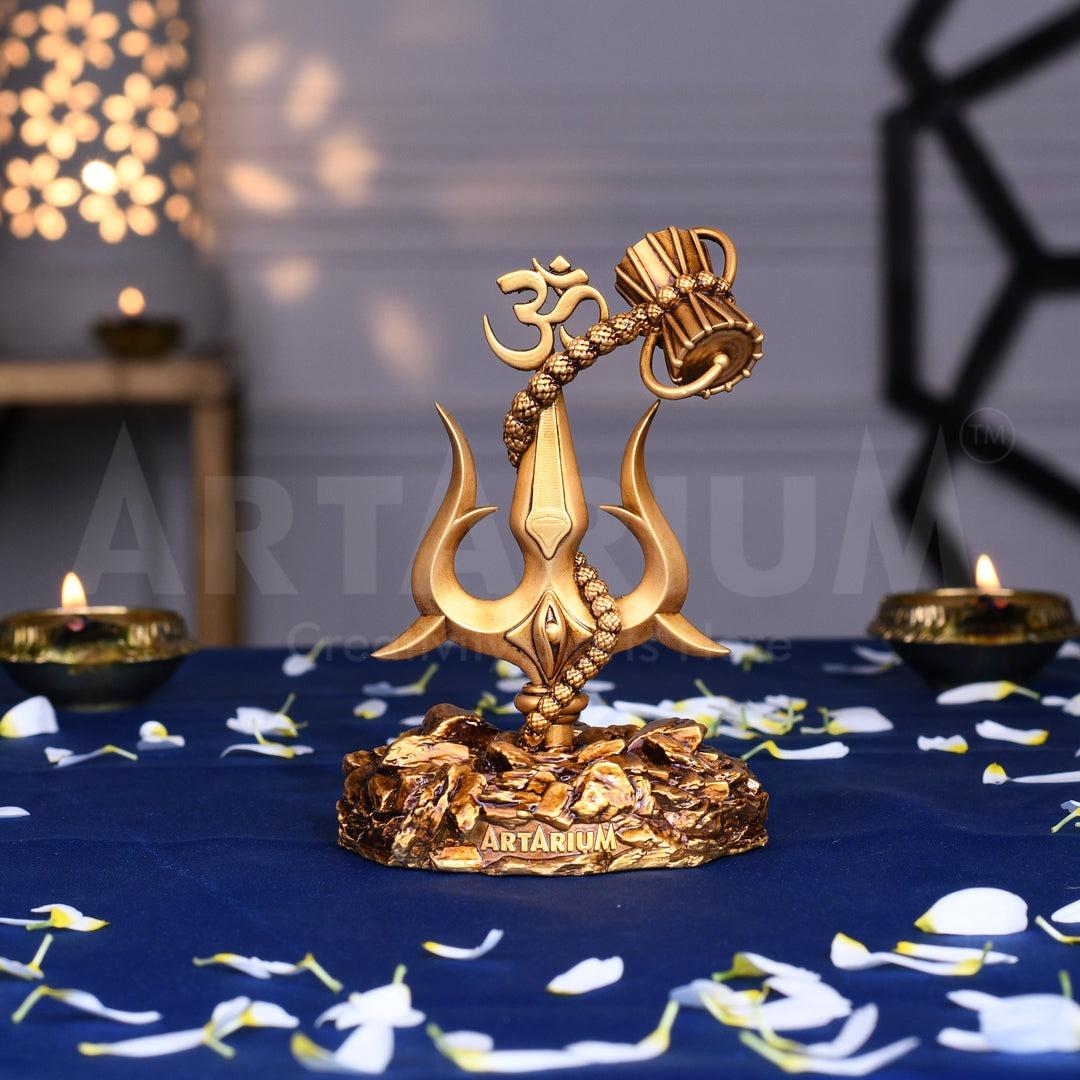In the vast and intricate tapestry of Hindu mythology, Lord Shiva stands as a central figure, embodying the principles of creation, destruction, and transformation. Adorned with various symbols and attributes, two of the most iconic representations associated with Lord Shiva are the Trishul (trident) and the Damru (small drum). These sacred objects hold profound significance, symbolizing the cosmic forces at play and the divine attributes of the mighty Lord Shiva. In this blog, we shall delve into the symbolism of Lord Shiva's Trishul and Damru, unraveling their mysteries and exploring their deeper meanings.
The Trishul:
The Trishul: Manifestation of Divine Power and Balance
1. Symbol of Triumvirate Powers: At the forefront of Lord Shiva's iconography stands the Trishul, a formidable weapon that embodies his supreme authority and power. The Trishul consists of three prongs, each representing one of the triumvirate powers of creation, preservation, and destruction – Brahma, Vishnu, and Maheshwara, respectively. This symbolism underscores the cyclical nature of existence, wherein creation gives rise to preservation, which, in turn, leads to destruction, ultimately paving the way for regeneration and renewal.
2. Conquest Over Ego and Ignorance: The Trishul also symbolizes Lord Shiva's triumph over ego and ignorance. Each prong of the trident represents the three impurities or malas – Anava (ego), Maya (illusion), and Karma (action), which bind human beings to the cycle of birth and death. By wielding the Trishul, Lord Shiva signifies his ability to transcend these limitations, guiding devotees towards spiritual liberation and enlightenment.
3. Balance and Harmony: Furthermore, the Trishul represents the harmonious balance between opposing forces – such as creation and destruction, good and evil, light and darkness. Just as the prongs of the trident converge at a central point, symbolizing unity amidst diversity, Lord Shiva teaches us to embrace the inherent dualities of existence and find equilibrium amidst life's myriad challenges.
The Damru:
The Damru: Symbol of Creation and Cosmic Rhythm
1. Primordial Sound of Creation: Accompanying the Trishul in depictions of Lord Shiva is the Damru, a small drum-shaped instrument with two sides tied together by a central cord. According to Hindu mythology, the rhythmic beats of the Damru symbolize the primordial sound of creation – the divine vibration from which the universe emanates. As Lord Shiva plays the Damru, it signifies the continuous process of creation, echoing the eternal rhythm of life and existence.
2. Awakening Consciousness: The sound of the Lord Shiva Damru is believed to awaken consciousness and dispel ignorance, leading individuals towards spiritual enlightenment. As devotees attune themselves to the divine rhythm of the universe, they transcend mundane existence and embark on a journey of self-discovery and realization.
3. Symbol of Time and Transformation: Additionally, the Damru symbolizes the cosmic dance of Lord Shiva – the Tandava, which signifies the rhythmic cycles of creation, preservation, and destruction. As the beats of the Damru reverberate across the cosmos, they herald the passage of time and the transformative power of Lord Shiva, who oversees the dissolution of the old to make way for the new.
Conclusion: In conclusion, the Trishul and Damru of Lord Shiva represent profound metaphors for the cosmic forces at play and the divine attributes of the mighty deity. While the Trishul embodies Lord Shiva's supreme power, balance, and conquest over ego, the Damru symbolizes the rhythmic cycles of creation and the primordial sound of the universe. Together, these sacred objects serve as potent reminders of the eternal truths of existence and the transformative power of divine grace. As devotees contemplate the symbolism of Lord Shiva's Trishul and Damru, they are invited to embark on a spiritual journey of self-discovery, enlightenment, and communion with the cosmic dance of creation and destruction.

